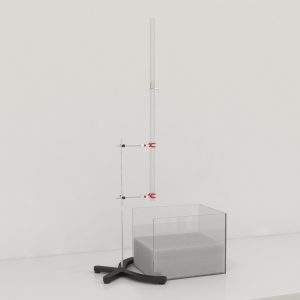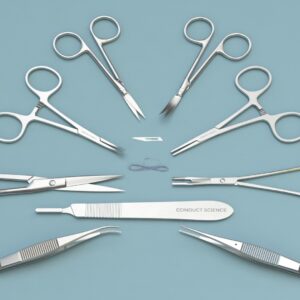$690.00 – $1,690.00Price range: $690.00 through $1,690.00
The MazeEngineers Bite test features a plastic apparatus designed to integrate seamlessly into the home tank or as a standalone unit connected to the home cage. The Bite test apparatus measures approximately 15×12×3.5 cm and is positioned within the home tank, filled to a depth of 3 cm with water.
Connected to the main tank via a narrow opening (3 cm wide), the apparatus allows fish to enter the box easily. It is designed for effortless removal to facilitate cleaning and maintenance.
References:
Miklosi A, Andrew RJ. Lateralized eye use associated with biting behavior in zebrafish. Behavioral Brain Research. 1999;105:199–205.

MazeEngineers empowers preclinical neuroscience research with meticulously designed, customizable behavioral apparatuses. From manual classic mazes to fully automated smart systems, we provide the tools scientists need to capture high-quality, reproducible data for studies on learning, memory, anxiety, and depression.

bool(false)



The Zebrafish Bite test assesses cerebral lateralization by measuring eye preference based on the visual stimuli fixated upon. This test apparatus is integral for evaluating habituation in biting behavior correlated with preferential eye use when encountering novel objects.
Moreover, the Bite test can explore changes in Zebrafish biting responses using beads of varying colors, facilitating the assessment of color preferences that stimulate biting behavior. This versatility makes the Bite test apparatus highly effective for observing a wide range of behaviors in Zebrafish, highlighting the presence of cerebral lateralization.
The apparatus easily attaches inside a home tank, remaining connected to the main tank through a small opening for fish to enter and exit during trials.
Past research indicates that Zebrafish predominantly use their right eye when scrutinizing stimuli to make decisions, particularly in relation to biting behavior (Miklosi and Andrew RJ, 1999). Conversely, Bisazza et al., 1997 observed left eye use in poecilid fish to assess familiarity with stimuli.
The Bite test methodically examines the association between eye preference and biting behavior. Conducted across four trials with exposure to beads of different colors or black and white, it separately tracks biting habituation and eye preference in each trial. The apparatus’s design, which allows fish to enter and exit freely, makes it ideal for studying mnemonic tendencies alongside other traits.
There are two variations of the bite test apparatus, each effectively observing cerebral lateralization and biting habituation in Zebrafish.
One version is the bite test chamber, a plastic box measuring 15 cm long, 3.5 cm high, and 12 cm wide. This apparatus features a 3 cm wide opening connecting it to the home tank, allowing Zebrafish to freely enter or exit.
The other version is a home cage with an integrated bite test chamber, eliminating the need to fit it into another tank. This larger apparatus measures 30 cm long, 10 cm high, and 30 cm wide, accommodating both subjects and the bite test chamber.
The ample dimensions of these apparatuses facilitate unhindered movement, enabling Zebrafish to freely navigate according to observed stimuli. This mobility aids in analyzing the hemisphere utilized for decision-making in response to specific stimuli. Both versions of the bite test chamber are designed for easy detachment, simplifying disinfection and cleaning processes.
Pre-Training for Zebrafish Bite Test
Five days before the experiment commences, adult female Zebrafish are transferred to a holding tank where the bite test apparatus is installed, filled with water to a depth of 3 cm. The subjects are maintained on a 14-hour light and 10-hour dark cycle to regulate their circadian rhythm. To encourage regular visits to the box, food is scattered over the water surface of the bite test chamber. On the day of the trial, the fish are fed only after the test concludes.
At the beginning of the experiment, round beads (approximately 2.5 mm in diameter) are affixed to a transparent vertical rod (around 2 mm in diameter), positioned at the far end of the box opposite the opening. The bead is submerged 1 cm below the water surface, aligning it with the eye level of the fish.
In a four-trial bite test, both biting frequency and the use of the right eye are notably higher during the initial trial. Furthermore, colored beads elicit greater interest in Zebrafish compared to black and white beads.
Two primary metrics are employed for bite test analysis. Firstly, the duration fish spend inside the apparatus during each trial is measured, providing insights into their body orientation while observing the stimulus, particularly which eye (right or left) is being utilized. Secondly, the number of bites on the bead is counted, serving as a measure of biting behavior across different trials.
The bite test apparatus is instrumental for assessing cerebral lateralization in Zebrafish. By observing the position of the body relative to the stimulus, researchers can determine which eye the fish is using to focus on the stimulus. This provides valuable insights into the visual preferences and lateralized behaviors of the fish.
The bite test apparatus facilitates the study of biting behavior by presenting beads of different colors. This chromatic variation elicits diverse responses in Zebrafish, contributing to the understanding of their feeding and biting tendencies.
This apparatus aids in assessing the relationship between right eye dominance and decision-making. The pronounced decrease in right eye use during the second and third trials of the bite test strongly indicates that the right eye plays a pivotal role in determining responses to novel stimuli.
From the above data, it is evident that the right eye is used to make decisions towards a novel stimulus. Once the stimulus is no longer new; the use of the right eye drops to a significant extent.
The bite test chamber offers a unique advantage in studying the relationship between decision-making and right-eye dominance in Zebrafish. Its design allows clear observation of body angles, revealing which eye is focused on evaluating the stimulus. Moreover, when integrated with the home tank, it creates a natural environment conducive to observing the fish’s innate behavioral patterns.
The practical dimensions of the bite test apparatus enable fish to move freely according to their visual interests. This freedom aids in identifying which hemisphere is engaged in decision-making processes related to the presented stimulus.
Additionally, the bite test apparatus is well-suited for assessing the mnemonic responses of Zebrafish to stimuli of varying colors.
Mench JA, Andrew RJ. (1986). Lateralisation of a food search task in the domestic chick : Behavioral and Neural Biology.
Bisazza A, Pignatti R, Vallortigara G. (1997) Laterality in detour behaviour: interspecific variation in poeciliid fish : Animal Behavior
Miklosi A, Andrew RJ. (1999) Right eye use associated with decision to bite in Zebrafish : Behavioral Brain Research
| Bite test chamber | Bite Test Chamber, Bite Test Chamber with Home Chamber |
|---|
There are no questions yet. Be the first to ask a question about this product.